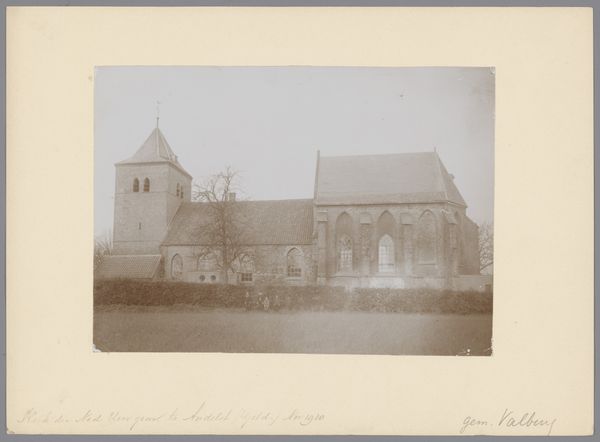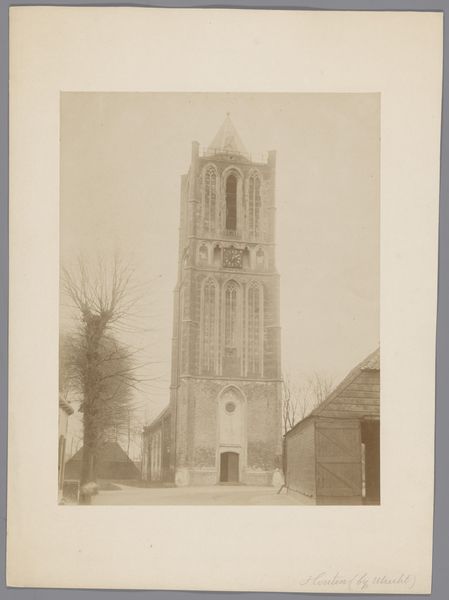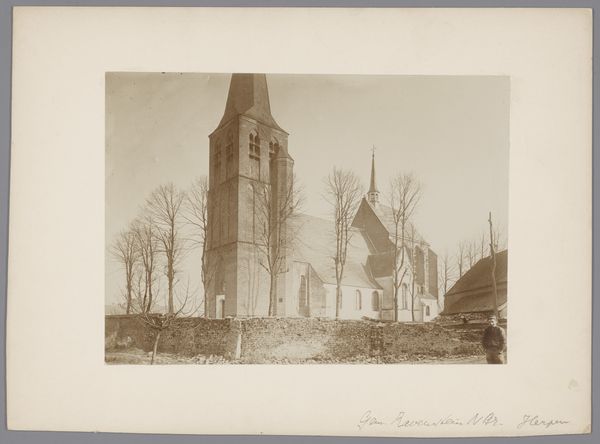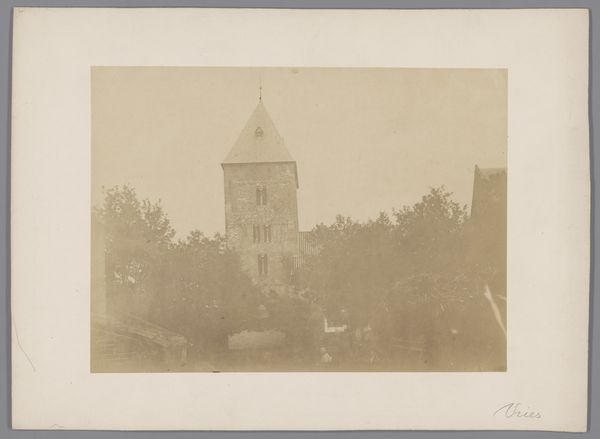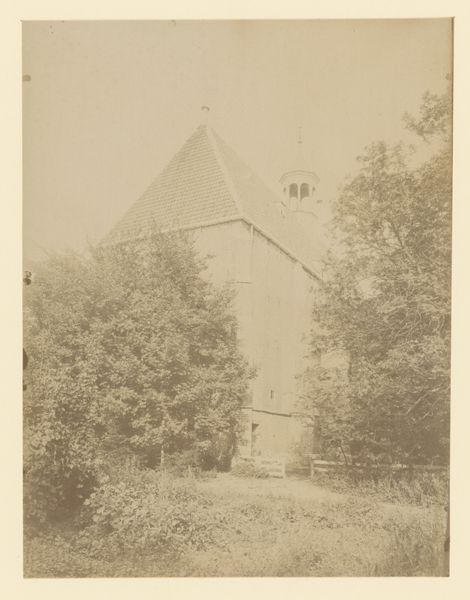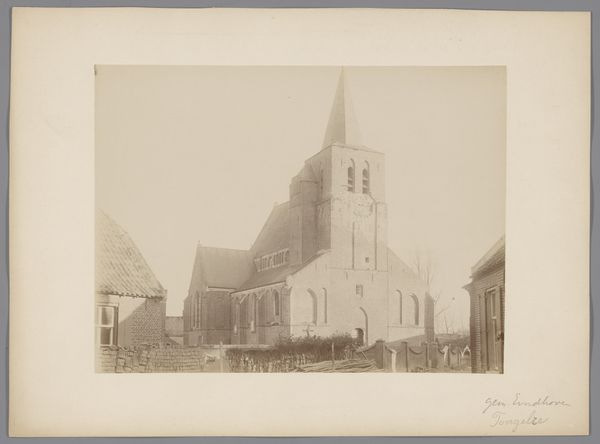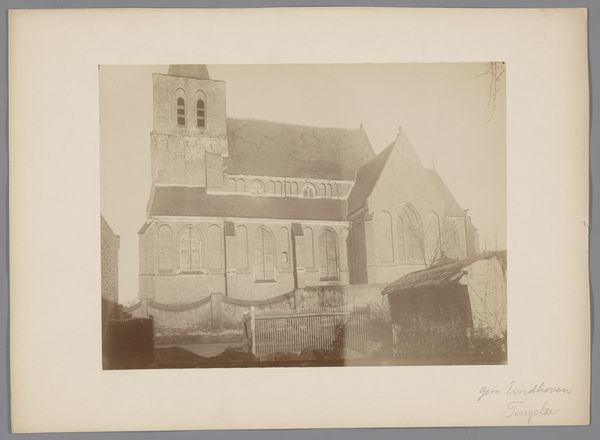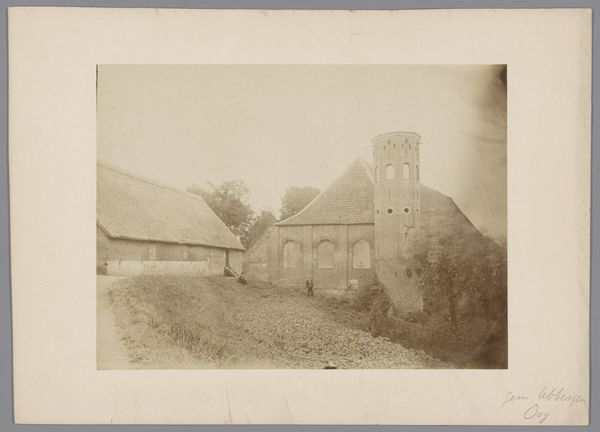
photography, gelatin-silver-print
#
16_19th-century
#
landscape
#
photography
#
historical photography
#
gelatin-silver-print
#
19th century
#
realism
Dimensions: height 102 mm, width 134 mm
Copyright: Rijks Museum: Open Domain
Curator: Here we have Eberhard Cornelis Rahms’ "De wallen van Oudewater, 1876," a gelatin-silver print dating back to the late 19th century. Editor: The most prominent element that strikes me immediately is the formidable church tower and steeple at the composition's center. Curator: Absolutely, its vertical thrust draws the eye upward. But consider, too, the town's walls and the reflective surfaces in the waterway. Churches served not just as religious hubs, but also as visual landmarks, centers of power, and focal points in civic life. Editor: Precisely! The spire's presence dominates, but the flat horizontal expanse of the surrounding land is compelling. And that limpid surface quality on the water... The composition seems balanced between aspiration, signaled by the tower, and stasis suggested by the surrounding walls and the town’s location alongside water. Curator: Waterways have historically signified transport and connection but they may equally speak to division. Editor: A beautiful point; perhaps the work isn't solely a visual record of a location; it is rather a visual thesis, presenting an intersection of change and constancy. Curator: Indeed! A compelling tension lies in recognizing Oudewater as a subject rooted in a distinct timeframe, while contemplating that cultural heritage persists and memories still connect us to that time. What appeared timeless may show what survives change or is utterly destroyed. Editor: True. The seemingly simple rendering gives rise to considerations about permanence versus impermanence; visually speaking, a fine equipoise occurs via muted tonal registers across this monochromatic presentation. It shows incredible gradations. Curator: I agree, this is more than documentation. We see history and cultural memory brought forward for our interpretation and study. Editor: Yes. This work makes one want to seek other pictures of the period to witness, by close comparison, if these artistic strategies are peculiar to this work or found across a range of makers.
Comments
No comments
Be the first to comment and join the conversation on the ultimate creative platform.

